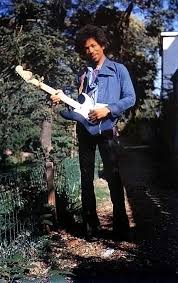Understanding the Impact of Jimi Hendrix’s Death

Introduction
The death of legendary guitarist Jimi Hendrix on September 18, 1970, marked a pivotal moment not only in music history but also in the cultural landscape of the 20th century. As one of the most influential figures in the rock music genre, his untimely passing at the age of 27 sent shockwaves through the music community and beyond. Hendrix’s innovative guitar techniques and psychedelic sound challenged musical conventions and inspired countless artists who followed.
The Circumstances of His Death
Jimi Hendrix was found unresponsive in a London apartment after a night of partying and drug use. Reports indicate that he had taken sleeping pills and alcohol, which contributed to his death by asphyxiation. The official cause was determined to be a barbiturate overdose, but the details surrounding the events leading up to his death remain somewhat mysterious and debated among fans and historians. Questions remain about the role that those around him played on that fateful night.
Aftermath and Legacy
The impact of Hendrix’s death resonated immediately. His passing not only left a void in the rock music scene but also intensified the allure surrounding the ’27 Club,’ a term used to describe popular musicians who died at the age of 27. This phenomenon highlights the tragic side of fame and the pressures artists face. In the years following his death, Hendrix’s work continued to gain acclaim, with albums such as “Are You Experienced” and “Electric Ladyland” showcasing his extraordinary talent. His music’s enduring popularity is evidenced by numerous posthumous releases and the continued influence he wields over new generations of musicians.
Conclusion
Jimi Hendrix’s death remains a significant cultural event that not only changed the trajectory of rock music but also sparked discussions about the challenges artists must navigate, including addiction and mental health concerns. As the music community reflects on his legacy, Hendrix is remembered not only for his incredible contributions to music but also as a symbol of the often tumultuous lifestyle that can accompany artistic brilliance. The significance of his life and abrupt end continues to inspire conversations about the future of creativity and the pressures inherent within the entertainment industry.


